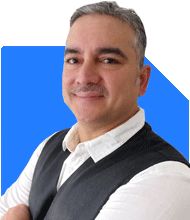Advait Arora | Answer |Ask -Follow
Financial Planner - Answered on Jan 22, 2024
He holds a masters in IT management from the University Of Wollongong, Australia, and an MBA in marketing from Charles Strut University, NewCastle, Australia.
Advait is a firm believer in the power of compounding to help his clients grow their wealth.... more

I have IRFC 2500 shares what is the future of it?
You may like to see similar questions and answers below
Samraat Jadhav |2498 Answers |Ask -Follow
Stock Market Expert - Answered on Oct 05, 2023
Samraat Jadhav |2498 Answers |Ask -Follow
Stock Market Expert - Answered on Jan 30, 2024
Samraat Jadhav |2498 Answers |Ask -Follow
Stock Market Expert - Answered on Dec 18, 2023
Samraat Jadhav |2498 Answers |Ask -Follow
Stock Market Expert - Answered on Feb 08, 2024
Samraat Jadhav |2498 Answers |Ask -Follow
Stock Market Expert - Answered on Feb 09, 2024
Dr Shyam Jamalabad |107 Answers |Ask -Follow
Dentist - Answered on Dec 05, 2025
Dr Shyam Jamalabad |107 Answers |Ask -Follow
Dentist - Answered on Dec 05, 2025
Dr Dipankar Dutta |1836 Answers |Ask -Follow
Tech Careers and Skill Development Expert - Answered on Dec 05, 2025
Ulhas Joshi |280 Answers |Ask -Follow
Mutual Fund Expert - Answered on Dec 05, 2025
Dr Dipankar Dutta |1836 Answers |Ask -Follow
Tech Careers and Skill Development Expert - Answered on Dec 04, 2025
Ravi Mittal |676 Answers |Ask -Follow
Dating, Relationships Expert - Answered on Dec 04, 2025
Anu Krishna |1745 Answers |Ask -Follow
Relationships Expert, Mind Coach - Answered on Dec 04, 2025
Anu Krishna |1745 Answers |Ask -Follow
Relationships Expert, Mind Coach - Answered on Dec 04, 2025
Mayank Chandel |2562 Answers |Ask -Follow
IIT-JEE, NEET-UG, SAT, CLAT, CA, CS Exam Expert - Answered on Dec 04, 2025
Mayank Chandel |2562 Answers |Ask -Follow
IIT-JEE, NEET-UG, SAT, CLAT, CA, CS Exam Expert - Answered on Dec 04, 2025




























